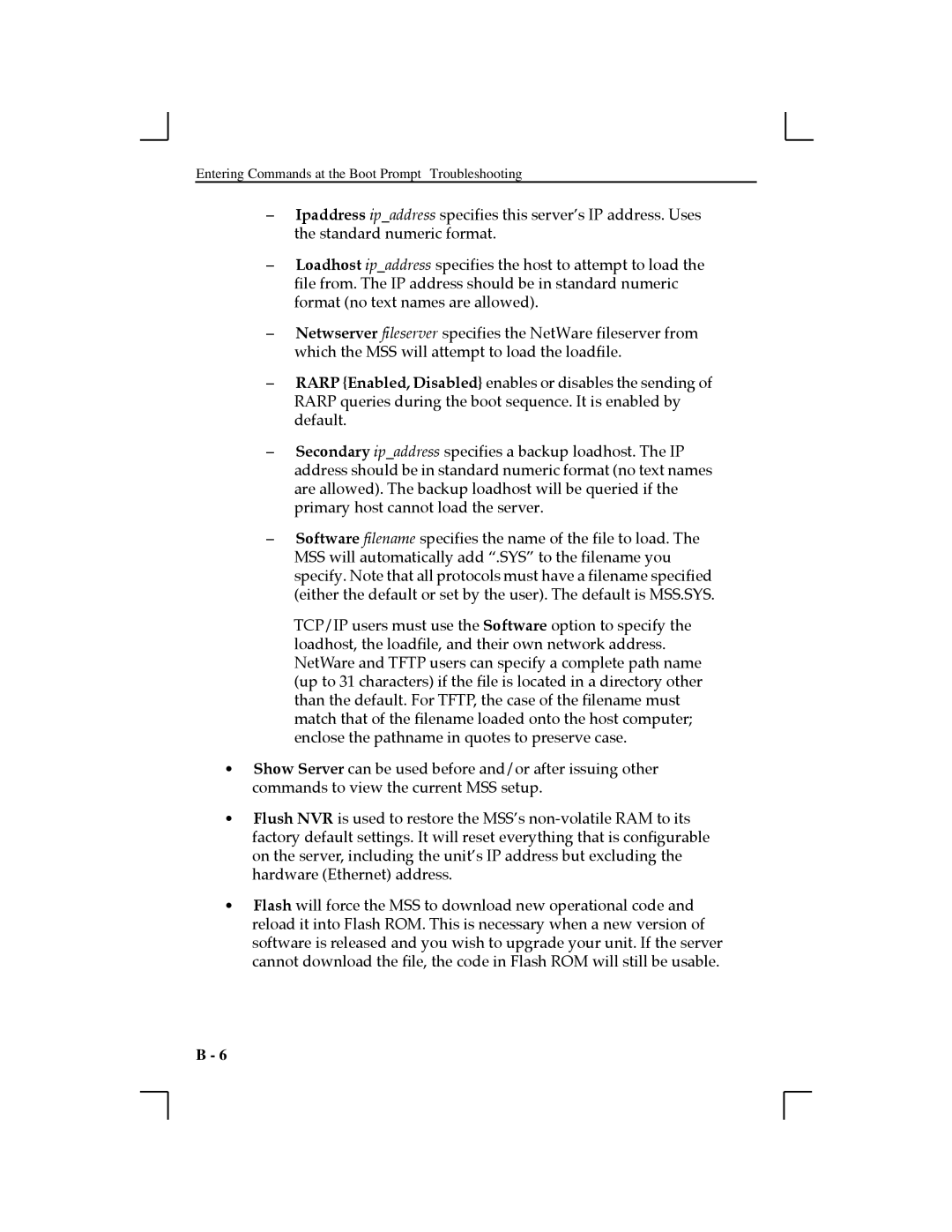
Entering Commands at the Boot Prompt Troubleshooting
ÐIpaddress ip_address specifies this serverÕs IP address. Uses the standard numeric format.
ÐLoadhost ip_address specifies the host to attempt to load the file from. The IP address should be in standard numeric format (no text names are allowed).
ÐNetwserver fileserver specifies the NetWare fileserver from which the MSS will attempt to load the loadfile.
ÐRARP {Enabled, Disabled} enables or disables the sending of RARP queries during the boot sequence. It is enabled by default.
ÐSecondary ip_address specifies a backup loadhost. The IP address should be in standard numeric format (no text names are allowed). The backup loadhost will be queried if the primary host cannot load the server.
ÐSoftware filename specifies the name of the file to load. The MSS will automatically add Ò.SYSÓ to the filename you specify. Note that all protocols must have a filename specified (either the default or set by the user). The default is MSS.SYS.
TCP/IP users must use the Software option to specify the loadhost, the loadÞle, and their own network address. NetWare and TFTP users can specify a complete path name (up to 31 characters) if the Þle is located in a directory other than the default. For TFTP, the case of the Þlename must match that of the Þlename loaded onto the host computer; enclose the pathname in quotes to preserve case.
¥Show Server can be used before and/or after issuing other commands to view the current MSS setup.
¥Flush NVR is used to restore the MSSÕs
¥Flash will force the MSS to download new operational code and reload it into Flash ROM. This is necessary when a new version of software is released and you wish to upgrade your unit. If the server cannot download the Þle, the code in Flash ROM will still be usable.
B - 6
